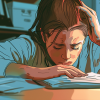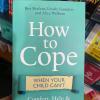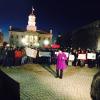Dear Friend,
Congratulations on your new astronomy teaching assignment. For the last 25 years I’ve enjoyed the challenges of teaching social studies to junior and senior high students. But when my principal asked me to teach an astronomy course last year, I was a bit apprehensive. I’ll be glad to share some of my first-year experiences with you and I hope you will do the same when you’ve finished your year.
So here’s my first piece of advice: Take the astronomy assignment with a thrill in your heart. Many teachers don’t always get to decide what subjects to teach, and if you feel unprepared or unsupported, hesitation is understandable. Even though I’ve been an active amateur astronomer for several years, I took a week to talk with others and think, before accepting the offer. Take your time deciding, but my advice is to go for it.
Your community can probably be a big help to you. If you have a planetarium nearby, use it. There are many astronomy concepts more easily explained there than in the classroom. At the Greensboro Natural Science Center, Roger Joyner is the curator for Zane Planetarium. Roger and I planned a series of monthly visits for my astronomy class. Together we developed a list of topics for the visits, then Roger took care of the details. From coordinate systems to changing of the seasons, Roger did a great job. My students gave our planetarium visits the highest rating on my year-end survey.
There might be an astronomy club nearby, so be sure to contact them. Along with star parties and lecture programs, there may be other club activities that could inspire your students. One of my students is currently planning a presentation to the Greensboro Astronomy Club on the effects of solar activity on telecommunication.
Remember "extra-credit." It still amazes me how high the level of student interest is when extra-credit is offered for quality participation. Also, take time at the beginning of the school year to establish an Astronomy Award. Many high school students can use recognition (and money if possible) when applying for college.
Be sure to check with other science teachers, both on and off your campus. Colleagues can clue you in on all sorts of opportunities available for teachers and students. Guilford Technical Community College (GTCC) has an observatory available for the public and special groups. Aaron Martin, the Director of GTCC’s Cline Observatory, also organizes teacher workshops and outreach programs for school groups. Reading about astronomy and looking at pictures is good, but not much can beat actually looking through a telescope.
If you get the chance, take a course at your local college. My appreciation for the challenge our students face while trying to both "have a life" and study dramatically increased when I took an astronomy course several years ago. Taking my first test provided a healthy dose of reality.
There are some good astronomy textbooks on the market. I encourage you to visit the next conference of the Astronomical Society of the Pacific (ASP) to examine some of the items on display. It seems that textbooks generally take either a "near-to-far" or "far-to-near" approach. I was more comfortable with the later because of earlier experiences, but find the one that suits you and your students.
2000 Annual Meeting 2000 Annual Meeting
Two scenes from the vendor’s area of the 2000 Annual Meeting of the ASP in Pasadena, California. Images courtesy of ASP.
At the 1999 ASP conference in Toronto, textbook vendors helped me decide which book was best for my students, and other vendors offered many exciting products. From the American Association of Variable Star Observers I ordered the kit "Hands-On Astrophysics" with activities to help students learn more about variable stars. We used a variety of those activities during the year in class.
Among the products I’ve ordered from the ASP Catalog is The Universe at Your Fingertips, a collection of activities for students on many aspects of astronomy. My kids most enjoyed the "Thousand Meter Walk," combining a scale model of the Sun and planets to the same scale, with the distances between them. That activity is an eye-opener for students and teachers. When word of the "Walk" got around school, I was asked by the science teachers to take them on the walk as part of our staff-development program.
An astronomy conference is not only a shopping trip, but also a good opportunity to talk with astronomers and astronomy teachers from around the world. Take lots of notes at the demonstrations and seminars; you’ll probably get some excellent teaching ideas there. Become active in astronomy. Not only will that give your students a good role model, but I bet you’ll end up having a great time, too.
Stay in touch with your students during the academic year. They will tell you, sometimes subtly, what they’ve enjoyed and what they haven’t. Maybe you’ll want to prepare a survey for your students to complete at the end of the school term. I asked my students which activities they would most recommend I keep for the following year, and which activities I should revise or abandon (and you can imagine how "taking tests" ranked.)
Finally, keep the excitement alive in your classroom. Sprinkle in the appropriate amount of videos, discussions, out-of-doors activities and slides, and your new astronomy class can be an exciting beginning in a teaching career. There are so many wonderful images in astronomy – share their beauties with your class as often as you can. There are many great materials that might fit your budget.
So that’s it. Reach out to your community, find good materials with stunning images, and participate. I hope you’ll have fun teaching your new astronomy course. Please let me know what you learn during your first year.
Best wishes,
Dennis Hands
















